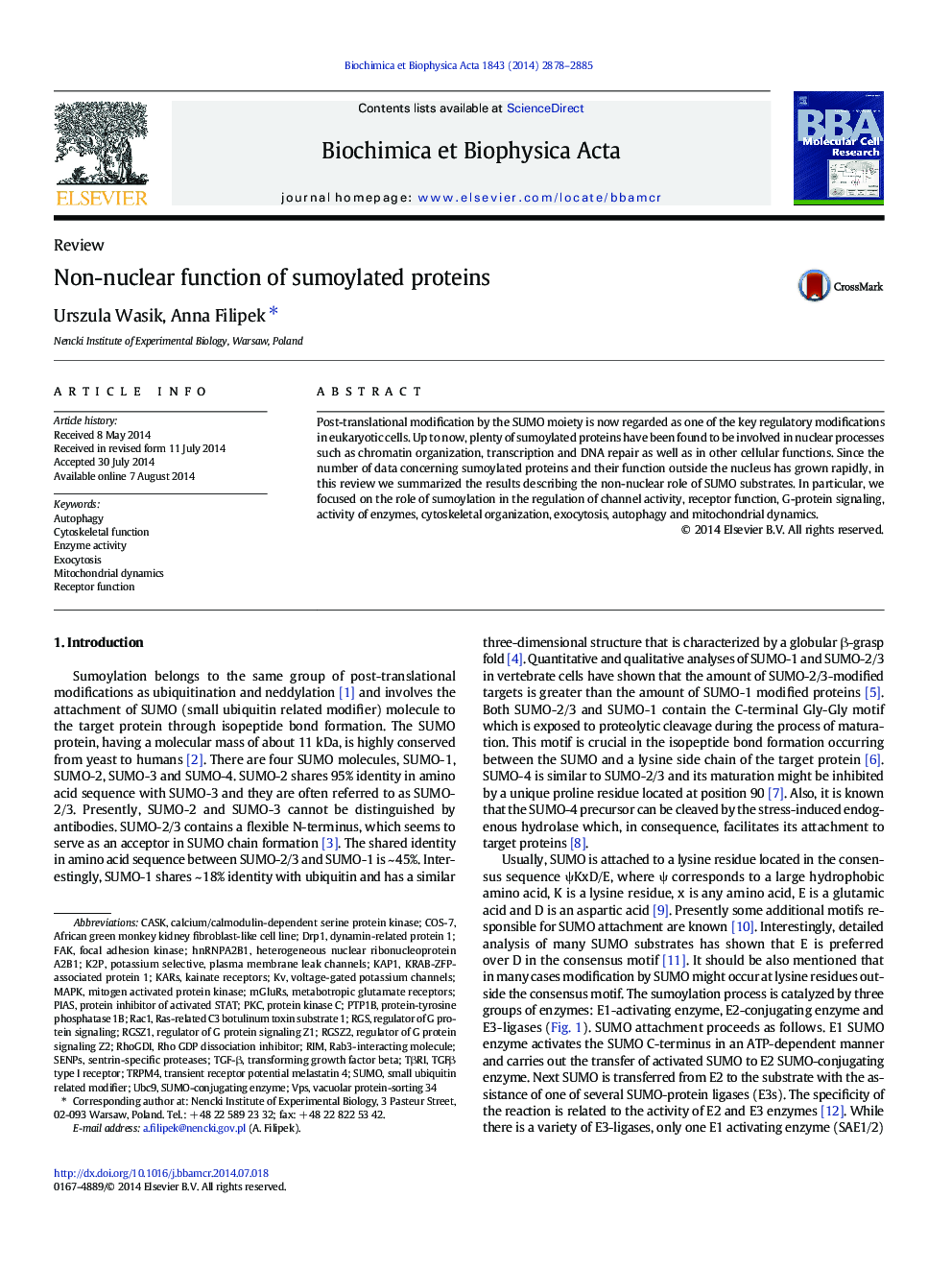| Article ID | Journal | Published Year | Pages | File Type |
|---|---|---|---|---|
| 8303783 | Biochimica et Biophysica Acta (BBA) - Molecular Cell Research | 2014 | 8 Pages |
Abstract
Post-translational modification by the SUMO moiety is now regarded as one of the key regulatory modifications in eukaryotic cells. Up to now, plenty of sumoylated proteins have been found to be involved in nuclear processes such as chromatin organization, transcription and DNA repair as well as in other cellular functions. Since the number of data concerning sumoylated proteins and their function outside the nucleus has grown rapidly, in this review we summarized the results describing the non-nuclear role of SUMO substrates. In particular, we focused on the role of sumoylation in the regulation of channel activity, receptor function, G-protein signaling, activity of enzymes, cytoskeletal organization, exocytosis, autophagy and mitochondrial dynamics.
Keywords
SENPsRab3-interacting moleculeTGF-βRho GDP dissociation inhibitorPIASUbc9KAP1PTP1BTβRICOS-7K2PProtein-tyrosine phosphatase 1BRhoGDIKARsTRPM4VPSmGluRsSUMOFAKRac1PKCDrp1RGSMAPKAutophagyExocytosisTransforming Growth Factor BetaMitochondrial dynamicsRegulator of G protein signalingRIMRas-related C3 botulinum toxin substrate 1Receptor functionEnzyme activityprotein inhibitor of activated Statdynamin-related protein 1calcium/calmodulin-dependent serine protein kinaseProtein kinase Cmitogen activated protein kinaseCASKVoltage-gated potassium channelsfocal adhesion kinaseMetabotropic glutamate receptorskainate receptors
Related Topics
Life Sciences
Biochemistry, Genetics and Molecular Biology
Biochemistry
Authors
Urszula Wasik, Anna Filipek,
